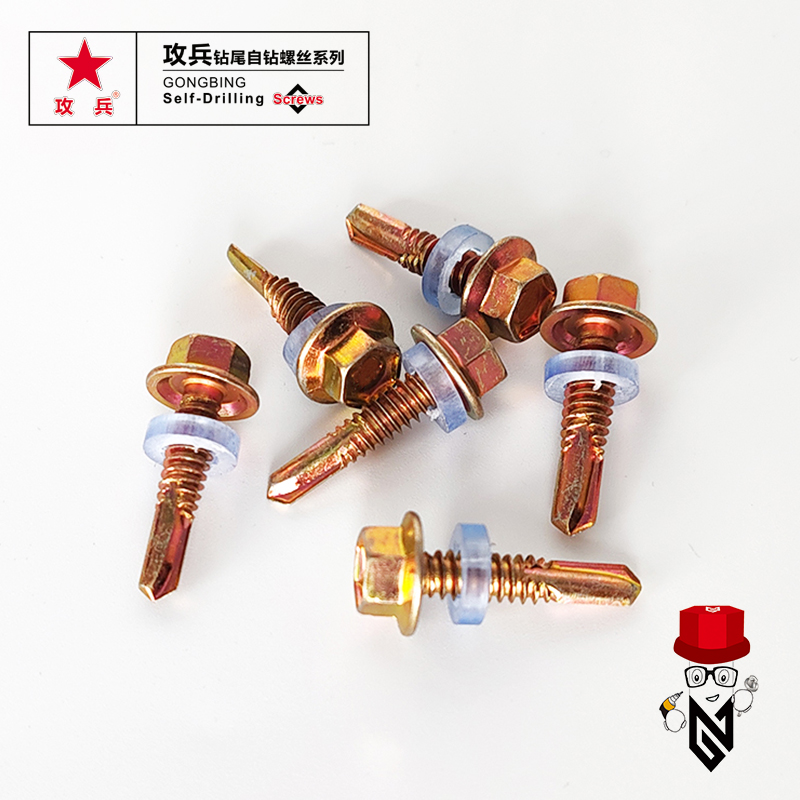Understanding the Importance of Shear Connector Studs in Structural Applications
Understanding Shear Connector Studs A Key Component in Structural Engineering
Shear connector studs, often referred to simply as shear studs, play a crucial role in modern structural engineering, particularly in the construction of composite steel and concrete structures. These innovative fasteners are designed to establish a mechanical bond between steel components and concrete, ensuring structural integrity and performance. With the increasing complexity and demands of contemporary construction projects, shear studs have gained significance in providing efficient load transfer, enhancing the performance of composite beams, and improving overall structural efficiency.
The Role of Shear Connectors
Shear connectors are primarily used in composite beam design, where steel beams are combined with a concrete slab to form a cohesive structural unit. This combination allows the structure to efficiently resist bending moments and shear forces. The shear studs, commonly made of high-strength steel, are welded onto the top flange of steel beams prior to the pouring of concrete. Once the concrete is poured and cured, the studs create a mechanical bond that allows the concrete slab to act compositely with the steel beam.
This composite action is essential because it enables the structure to take advantage of both materials’ strengths—steel's high tensile strength and concrete’s excellent compressive strength. The composite beam behavior leads to improved load-carrying capacity and reduced deflections, which is critical for ensuring the safety and serviceability of the structure.
Design Considerations
When designing using shear connectors, several factors must be taken into account. The number and configuration of shear studs are determined based on the anticipated loads, the properties of the materials involved, and the specific application. Engineers must refer to relevant design codes and standards, such as the American Institute of Steel Construction (AISC) guidelines or the Eurocode, which provide specifications on shear stud design, placement, and spacing.
The shear stud's diameter, height, and spacing are critical parameters that influence the effectiveness of the connection. For example, if the studs are placed too far apart, the load transfer efficiency may decrease, leading to potential structural failure. Conversely, excessive stud placement can lead to unnecessary material costs and performance issues. Therefore, a careful balance must be struck to ensure optimal performance and cost-effectiveness.
shear connector studs

Fabrication and Installation
Fabrication and installation procedures for shear studs are paramount to their effectiveness. The welding of shear studs must be performed with precision to ensure a secure bond between the studs and the steel flange. Common welding methods include the use of arc stud welding, which provides a strong connection with minimal surface preparation. Proper techniques will not only ensure the strength and integrity of the connection but also facilitate easier and faster construction timelines.
Moreover, the installation of shear studs must align with the project’s overall construction schedule. Typically, shear studs are installed before the concrete is poured, allowing for a seamless integration of the two materials. Timing, therefore, is a critical aspect that requires careful planning to avoid delays and to ensure the structural performance in the long run.
Benefits of Using Shear Connectors
The incorporation of shear connectors in construction brings multiple benefits. Firstly, they maximize the structural load capacity while minimizing material usage, thereby promoting sustainability in construction practices. Additionally, the use of shear studs allows for greater design flexibility, enabling engineers to explore innovative architectural forms and solutions.
Furthermore, the composite action provided by shear studs often leads to enhanced construction speed and reduced labor costs. With fewer materials required in some scenarios, project budgets can also be positively impacted.
Conclusion
Shear connector studs are an essential component in modern construction, facilitating the creation of composite structures that are safe, efficient, and functional. As the construction industry continues to evolve with new materials and technologies, the importance of shear studs in ensuring mechanical bonds between steel and concrete remains a foundational element in the design of resilient and innovative buildings. With careful consideration of design, fabrication, and installation, shear connectors will continue to play a vital role in shaping the future of structural engineering.
-
Weatherproof Plastic Expansion Anchors for OutdoorخبرونهJun.06,2025
-
Sustainability in the Supply Chain: Eco-Friendly TEK Screws ProductionخبرونهJun.06,2025
-
Load-Bearing Capacity of External Insulation FixingsخبرونهJun.06,2025
-
Double Head Bolts: Enhancing Efficiency in Industrial MachineryخبرونهJun.06,2025
-
Corrosion Resistance in Chipboard Screws: Coatings for Wholesale DurabilityخبرونهJun.06,2025
-
Butterfly Toggle Bolts : Enhancing Structural ResilienceخبرونهJun.06,2025
